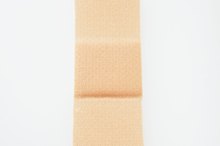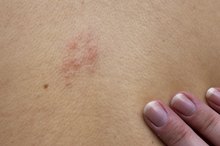What does fact checked mean?
At Healthfully, we strive to deliver objective content that is accurate and up-to-date. Our team periodically reviews articles in order to ensure content quality. The sources cited below consist of evidence from peer-reviewed journals, prominent medical organizations, academic associations, and government data.
The information contained on this site is for informational purposes only, and should not be used as a substitute for the advice of a professional health care provider. Please check with the appropriate physician regarding health questions and concerns. Although we strive to deliver accurate and up-to-date information, no guarantee to that effect is made.
How to Care for a Surgical Scar
After experiencing surgery, you will likely have an incision or scar site to care for at home. The way that you care for your incision can mean the difference between clean healing and an ugly scar. A healing surgery wound that reopens or becomes infected slows the healing process and puts you at risk for a surgery scar. Make sure that it stays clean and sterilized, while following all of your doctor's instructions for the best healing of your surgery scar possible.
Follow all of your doctor's instructions for scar care after the surgery. Depending on the site and the circumstances of the surgery, your scar care instructions may be slightly different, including the application of creams or taking oral antibiotics to help stop infection. Your doctor will likely issue written instructions. Hang them where you'll be caring for your surgical scar so you can review them often 2.
How to Heal Scars & Wounds
Learn More
Clean the scar on a daily basis. Make sure that you never scrub or rub the scar. Instead, clean it by working up a good lather with antibacterial soap, and then patting the suds over your scar. Leave for 15 to 20 seconds, and then rinse the soap away. Pat dry with a towel.
Change your dressings as often as your doctor instructs. To change your bandages, carefully wash your hands with antibacterial soap to clean them before touching the scar. Peel away the old dressing, making sure that you aren't removing skin as you peel. If skin is coming away with the dressing, wet the bandage and try again, suggests MedlinePlus website. Replace with a clean dressing, and tape over it with first aid tape.
How to Use Vaseline to Care for a Scar
Learn More
Apply ointment only when your doctor instructs you to, notes Drugs.com. While antibiotic ointment can help stop infection, in some cases it can also slow the healing process. If you need ointment, your doctor will likely prescribe some, and explain how and when to use it.
Contact your doctor if you notice signs of infection. An infection can spread and slow the healing process. Signs of infection include redness, pain, swelling or a yellowish discharge, according to Merck. You should also contact your doctor if your incision opens. You may need to have the site restitched or stapled to close the wound for better healing and less of a change for scarring.
Related Articles
References
- MedlinePlus: Surgical Wound Care
- Drugs.com: Caring for a Surgical Incision
- Shin TM, Bordeaux JS. The role of massage in scar management: a literature review. Dermatol Surg. 2012;38(3):414-23. doi:10.1111/j.1524-4725.2011.02201.x
- Ault P, Plaza A, Paratz J. Scar massage for hypertrophic burns scarring-A systematic review. Burns. 2018;44(1):24-38. doi:10.1016/j.burns.2017.05.006
- Cheatham SW, Lee M, Cain M, Baker R. The efficacy of instrument assisted soft tissue mobilization: a systematic review. J Can Chiropr Assoc. 2016;60(3):200-211.
- Kohata K, Itoh S, Horiuchi N, Yoshioka T, Yamashita K. Influences of osteoarthritis and osteoporosis on the electrical properties of human bones as in vivo electrets produced due to Wolff's law. Biomed Mater Eng. 2017;28(1):65-74. doi:10.3233/BME-171657
- Cheatham, S. Et al. The Efficacy of Instrument Assisted Soft Tissue Mobilization: A Systematic Review. J Can. Chiro, Assoc. 2016 Sep; 60(3): 200-11.
- Kim J, Sung DJ, Lee J. Therapeutic effectiveness of instrument-assisted soft tissue mobilization for soft tissue injury: mechanisms and practical application.Journal of Exercise Rehabilitation. 2017;13(1):12-22. doi:10.12965/jer.1732824.412.
- Kisner, C., & Colby, L. A. Therapeutic exercise: Foundations and techniques. (3 ed.). Philadelphia: FA Davis.
- Shin TM, Bordeaux JS. The Role of Massage in Scar Management: A Literature Review.Dermatologic Surgery. 2012;38(3):414-423. doi:10.1111/j.1524-4725.2011.02201.x.
Writer Bio
Kay Ireland specializes in health, fitness and lifestyle topics. She is a support worker in the neonatal intensive care and antepartum units of her local hospital and recently became a certified group fitness instructor.









